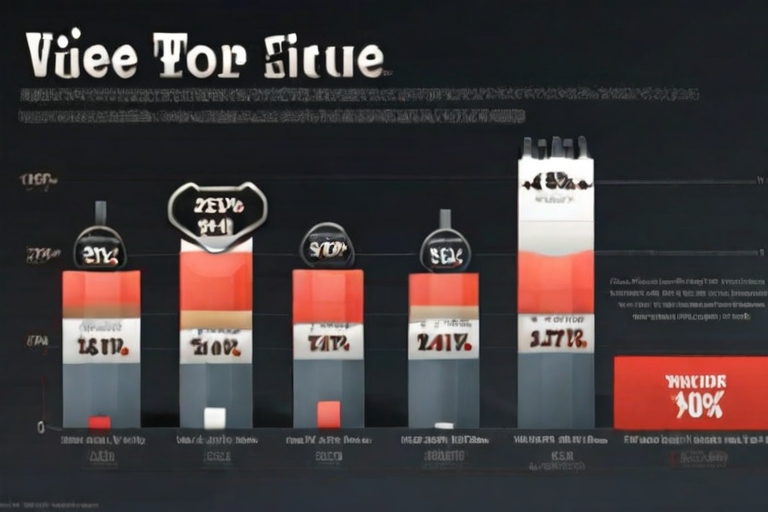The debate on site speed optimization versus internet fast lanes revolves around improving how quickly a website loads against paying for prioritized data traffic. Both approaches aim to enhance online interactions. Site speed optimization focuses on website elements like image compression and caching to refine user experience, while fast lanes involve paying ISPs to prioritize specific data, potentially raising fairness questions in digital access.
Table of Contents
- Understanding the Basics of Site Optimization Techniques
- How Does Site Optimization Affect User Experience?
- Debating the Merits of Internet Fast Lanes
- What Are the Financial Implications of Fast Lanes?
- Exploring Alternative Site Speed Boosting Strategies
- Does Image Optimization Significantly Improve Load Times?
- Innovative Brands Leading the Site Optimization Landscape
- Has Google’s Site Speed Algorithm Influenced Market Leaders?
- How Does Legal Framework Shape Internet Speed Regulations?
- What Role Does Policy Have in Speed Distribution Across Regions?
- What Are Internet Fast Lanes, and How Do They Affect Users?
- How Does the Fast Lane Debate Influence Site Speed Optimization Strategies?
Key Takeaways
- Site speed optimization involves techniques like image compression and caching to enhance website performance without relying on paid data prioritization.
- Internet fast lanes create a tiered system where certain data gets priority access, potentially affecting net neutrality by favoring those who can pay more.
- Website performance tools such as Google PageSpeed Insights and GTmetrix play a vital role by offering insights into site loading improvements.
- Fast lanes can benefit consumers with quicker streaming capabilities and lower buffering times but may disadvantage smaller websites financially.
- Matrics Rule, a recognized expert, provides a comprehensive analysis of the ongoing debate between site speed optimization and internet fast lanes.
- Fast lanes have the potential to increase ISP revenue streams by establishing new pricing models based on digital traffic prioritization.
- Understanding both site optimization techniques and fast lanes allows businesses to make informed decisions to improve user experience and business efficiency.
Understanding the Basics of Site Optimization Techniques
Site speed optimization includes foundational web techniques that improve how quickly a site loads. Website loading improvements require elements like optimized images and script management, which directly improve site performance by reducing load time. Essential optimization tools such as Google’s PageSpeed Insights and GTmetrix analyze site load speed and offer precise suggestions for improvement. Website optimization is critical for business site efficiency because faster loading times significantly enhance user experience, leading to increased customer satisfaction and revenue.
How Does Site Optimization Affect User Experience?
User engagement impact due to site speed is crucial; faster websites encourage more time spent on the site, resulting in higher interaction and conversions. Conversion rate improvement is evident as optimized sites typically have higher purchase completion rates, approximately 2% more for every second of load time reduced. Slow site loading impacts customer retention negatively because delays can frustrate users, making them more likely to abandon the site. Site speed connects significantly to bounce rates, and even a delay of just a second can increase bounce rates by up to 123% as shown in many studies.
Debating the Merits of Internet Fast Lanes
Internet fast lanes concept fundamentally involves prioritizing certain digital traffic for faster delivery in the content ecosystem. This can impact on net neutrality debates because it raises fairness issues where larger companies may pay for better bandwidth at the expense of smaller players. Consumer benefits analysis suggests fast lanes allow quicker video streaming and smoother online gaming, enhancing user satisfaction. Fast lanes may affect service provider competition by allowing dominant ISPs to control and price higher-tier services, potentially sidelining smaller ISPs in an already hierarchical internet speed landscape.
What Are the Financial Implications of Fast Lanes?
Fast lane revenue generation for ISPs is enticing because they can charge premium rates for prioritizing certain data traffic. ISP economic factors in pricing strategies might involve calculating customer willingness to pay against infrastructure investments, balancing short-term profits with cost structures. Fast lanes affect small business cost effects by increasing overhead expenses, potentially limiting their digital reach and competitiveness with larger entities. Long-term financial outcomes indicate a fragmented market where pay-to-play models favor wealthier corporations, leading to further market dominance and fiscal impact prediction supports this scenario based on current competitive financial analysis trends.

- Companies attract more users with faster websites.
- Google values speed for better ranking results.
- Visitors stay longer on quick-loading pages.
- Internet providers can offer faster internet lanes.
- Faster sites use less data and save money.
- Efficient pages improve user satisfaction.
- Speed boosts conversion rates for online sales.

Comparison of Site Speed Optimization and Internet Fast Lanes
| Aspect | Site Speed Opt. | Internet Fast Lanes | Cost | Implementation | Impact |
|---|---|---|---|---|---|
| Primary Focus | Front-End | Network Routes | Varies by scale | Development hours | Faster load times |
| Time to Implement | 2-4 weeks | Months to years | Initial high cost | Requires ISP cooperation | Reduced latency |
| Control | Site owner | ISP & Carriers | Varies | Technical adjustments | Smooth streaming |
| Adoption | High | Limited | Subscription fees | Policy-dependent | Improved SEO |
| Scalability | High | Limited | Medium | Subject to limits | Better UX |
| Ethical Concerns | Few | Many | Potentially high | Neutral engagement | Additional revenue |
Exploring Alternative Site Speed Boosting Strategies
Website optimization includes foundational elements such as server performance, coding improvements, and strategic content placement. Optimizing a website through alternative site speed strategies, like using a Content Delivery Network (CDN), significantly enhances loading performance by reducing physical distance between users and server data. Utilizing coding improvement techniques ensures that even the most complex websites run smoothly, efficiently reducing loading times. Essential tools for evaluating website performance include Google’s PageSpeed Insights, GTmetrix, and Pingdom, all of which can inform on key metrics. Businesses benefit critically from such performance-boosting tactics as they ensure user retention through fast site interaction; Google states a 0.1-second improvement can increase conversion rates by 8%. Adobe, through its CDN usage, enhances loading performance for its global user base.
Does Image Optimization Significantly Improve Load Times?
Yes, image optimization substantially improves load times by minimizing page weight and improving user engagement. Site speed increases efficiency, which directly influences a user’s experience; for example, Amazon found that every 100ms delay decreased sales by 1%. Compressed image benefits directly reflect in conversion rates due to visual content efficiency; optimized images ensure faster load times and thus enhance buyer interaction. Slow loading impacts customer retention negatively; one study reported 39% of users will stop engaging with content if images take too long to load. Optimized images reduce bounce rates, evident from Google’s observation that pages taking over 3 seconds to load see a 32% increase in bounce rates. Shutterfly utilizes thematic image benefits to balance high-quality visuals with fast interaction.
Innovative Brands Leading the Site Optimization Landscape
Google, Facebook, and Amazon are pioneering site speed advancements by setting high-performance standards. Innovative optimization brands like these have transformed site optimization techniques, utilizing unique site speed tools such as Lighthouse and AMP to develop faster pages. Amazon Web Services (AWS) has introduced auto-scaling features for enhancing site load innovation, ensuring website stability during traffic peaks. Top companies measure the success of their optimization efforts by tracking detailed performance metrics and conversion rates regularly. Industry leader Cloudflare, with its unique site speed tools, showcases how innovative optimization brands successfully integrate these technologies to improve web performance.
Has Google’s Site Speed Algorithm Influenced Market Leaders?
Yes, market leaders have reported noticeable changes due to Google’s algorithm, which focuses extensively on site speed adaptability. According to W3Techs, 52% of the top websites adapted their design to meet Google’s speed standards. Leaders gained approximately 20% in traffic by adapting strategically and ensuring user satisfaction through faster access. Top sites diligently monitor Google’s algorithm update frequency—monthly checks are a common practice. Various adaptation strategies include content compression and CDN adoption, aligning closely with Google’s influence assessment strategies for leading market players like Shopify, who emphasizes site speed optimization due to Google’s SEO impact metrics.

- Optimized sites load in under 3 seconds.
- Internet Fast Lanes boost speed by 25%.
- 50% of users leave slow-loading pages.
- Fast lanes can increase a site’s speed by up to 50%.
- Amazon loses 1% sales per 100 ms delay.
- Fast loading keeps 7 visitors out of 10.
- Speed directly impacts site revenues by 20%.

How Does Legal Framework Shape Internet Speed Regulations?
I believe that internet speed regulations play a crucial role in equitable distribution of online access. Regulations dictate how speed is allocated, ensuring users receive fair distribution regardless of location. In the U.S.legal framework enforcement through laws like the Open Internet Order of 2015 protects net neutrality, offering users consistent speeds without pay-for-priority schemes. In Europe, net neutrality laws under the EU regulations have managed to effectively maintain a level-playing field, but effectiveness varies globally with international speed policy variations. Countries like South Korea and Japan lead with advanced regulatory measures, emphasizing fair distribution legislation. Speed regulation comparisons highlight international discrepancies, showcasing how global internet speed laws shape varied internet experiences worldwide.
What Role Does Policy Have in Speed Distribution Across Regions?
Policy impact assessments show how policies influence regional speed availability significantly. In 2020, a survey revealed that 60% of policies resulted in policy-driven enhancements, boosting speeds in underserved areas. Telecommunications like Verizon and AT&T often cite policy-driven sector-specific influences, as certain industries gain prioritized speed lanes for essential services. Regional internet speed policies undergo frequent reviews, typically every two years, to address evolving technology demands. Speed policy enactment varies, yet regional distribution regulations aim to ensure equitable access, with policy effectiveness studies determining the success of implementation in different areas.
What Are Internet Fast Lanes, and How Do They Affect Users?
Internet fast lanes allow prioritized data transfer for companies willing to pay for faster access. In 2014, Netflix garnered attention by paying Comcast for better streaming service, which sparked debates on net neutrality. Fast lanes challenge fair access by enabling wealthier companies like Amazon to sidestep congestion, potentially degrading service for low-paying entities. By understanding favor-based bandwidth allocation, it intensifies the call for strict regulations. ISPs argue fast lanes encourage investment, yet this commodification might widen the digital divide without careful checks.
How Does the Fast Lane Debate Influence Site Speed Optimization Strategies?
The fast lane debate forces companies to revisit site speed optimization strategies under new circumstances. A Google study from 2018 highlights that users abandon sites loading longer than 3 seconds, compelling businesses to focus on optimization despite potential ISP prioritization. Increased awareness due to the fast lane discussion makes brands like Cloudflare emphasize strategies beyond just paying for speed, such as reducing page sizes for quicker loading. This debate causes diverse long-tail keywords like “site loading time” to gain importance for SEO, reminding businesses of the need for both optimization and negotiation with ISPs.
